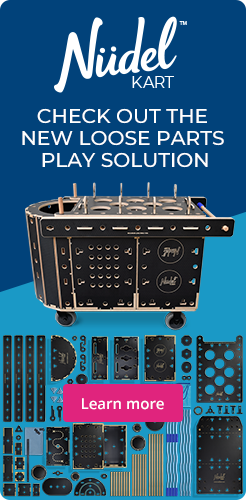Last June, Playground Ideas completed our most ambitious build to date: seven play areas dotted throughout the grounds of Ruben Centre, a primary school for 2,000 kids in the Mukuru slum of Nairobi, Kenya.
With a population of over 600,000, the Mukuru community of Nairobi is one of Kenya’s largest informal settlements. Ruben Centre is resource hub, offering education, health, financial and social programs to children and families in Mukuru.
Consultation
In the consultation phase of the project, we met with teachers and members of the administration to discuss their vision for the playground and to learn more about their school and surrounding community. Students showed us their unique games, took us on tours of their special spaces within the grounds, observed and discussed their peers at play, and drew pictures of their favorite free time activities. Several themes arose from these discussions:
- Lack of spaces for play in Mukuru. One teacher who grew up in the settlement recalled a few empty spaces he played in as a child, but lamented that today the congestion of Mukuru has ballooned beyond capacity. The only open spaces left are unsafe, leaving many parents to confine their children’s free time indoors. Teachers described how the play yard at Ruben is the only open, safe space for children in the surrounding area.
- Whole child education. Many of the parents of students are engaged in the centre’s on-site services – a micro-finance program, vocational training classes, a health clinic, and various micro-enterprises – modeling responsible practices for their children. Staff expressed their belief in the importance of Ruben students learning and practicing a wide variety of life skills to confidently navigate their futures.
- Building a playful school. The staff were enthusiastic about using every available empty nook and cranny throughout the school grounds for play elements. Director Frank O’Shea’s orders were, “I don’t want a playground, I want this school to be an entirely playable space.”
- Prevalence of imaginative play. Children described, modeled, and drew pretend play as families, shopkeepers, drivers, carpenters, musicians, “police & thieves,” soldiers, and animals. Imaginative play also included violent themes – police shooting thieves, playing with pretend guns, knives, bombs, etc. – likely, in some part, reflections of their processing of scenes they had witnessed themselves or heard about in their surrounding community.
A concept plan was developed for a series of seven play areas tucked throughout the school grounds that would allow for a variety of types of play and would create a movement flow throughout the school that could accommodate heavy use. Spaces were designed to celebrate and encourage the play culture already active within the space. Designs focused on facilitating imaginative, yet practical play, rooted in the real life surroundings of the student’s lives and in the life skills the community was working to instill in these children. The design was drafted and presented to the Ruben staff. Then, over 3 bustling weeks in June, with the hard work of carpenters, welders, and masons from the Mukuru community and the Playground Ideas team, the concept plan came to life.
Design
1. Football Pitch
Football is the most popular sport at Ruben, particularly for the older students. We repaired the main goals on the existing field, and supplemented them with three moveable sets of pitches, enabling multiple games at once. Along the edges of the field, several loads of soil from a construction site had previously been dumped. The younger kids loved running up and down the soil mounds. We used a digger to sculpt and compact the soil into a smooth, hilly track: perfect for a challenging run, or a perch to watch the action below. Sixteen swings also rimmed the field.
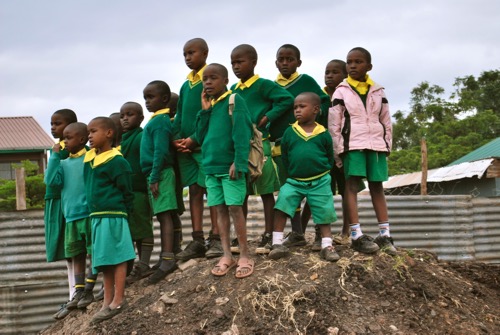

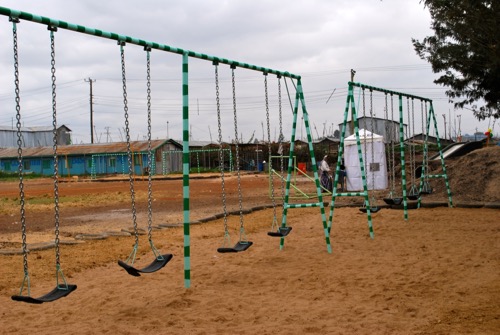
2. Adventure Forest
One side of the main play field contained a grove of pine trees and heaps soil also leftover from construction. In one corner, the mason crew constructed a giant cement and tile slide, built into the soil mountain.

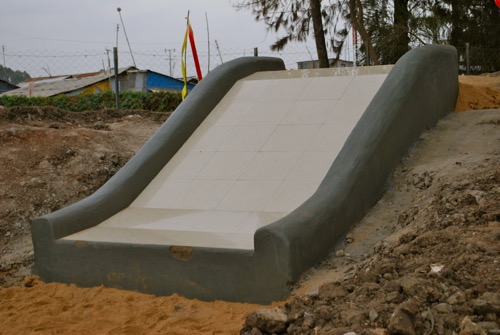
Throughout the forest, we sculpted the soil and added elements to create an obstacle course inspiring balance, concentration, and risk management.

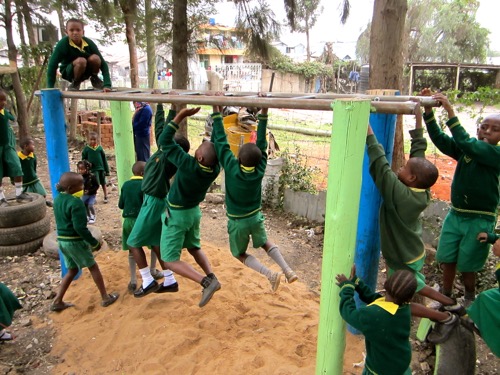
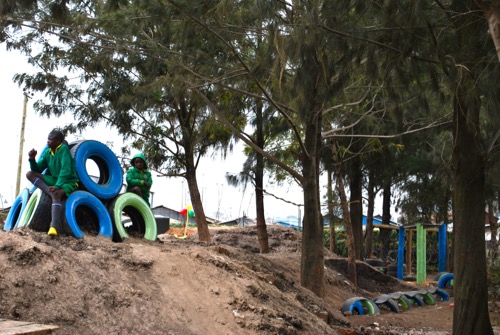
Culvert tunnels buried along the course allow for quiet nooks to escape from the action.

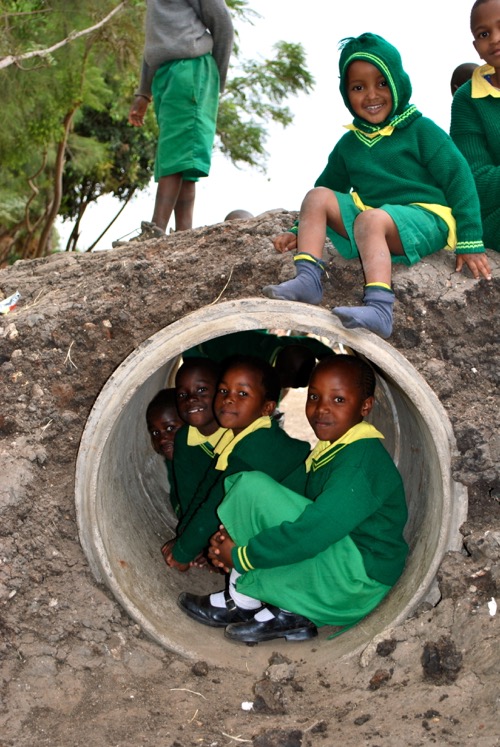
On a trip to a scrap metal shop while materials shopping, we spotted these steel poles, ideal for constructing a Geodesic Dome, a delightful addition to the course.
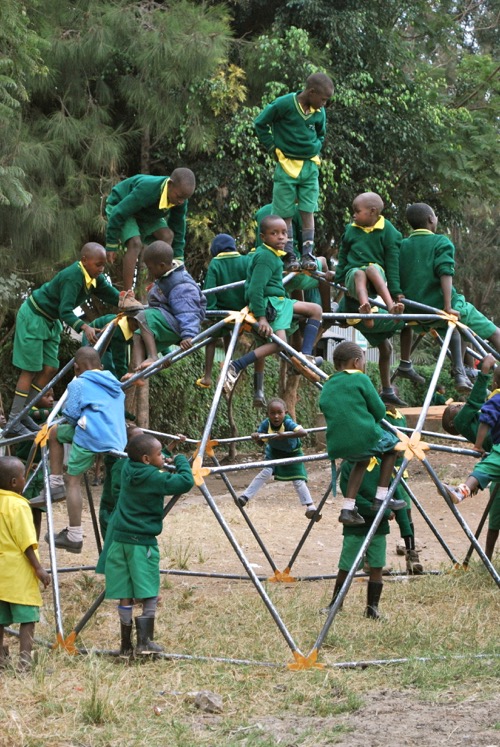

3. Kaskumu Court
The kids at Ruben play a game called “kaskumu,” similar to what North American kids call “hopscotch.” Four “kaskumu courts” were ground and painted on top of the school’s cemented sewage cap.

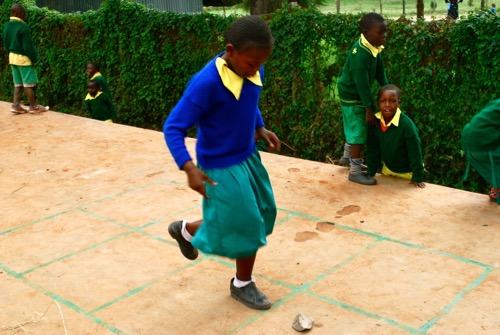
4. Peoples’ Village
During the consultation discussions, Duncan, a social studies teacher at the primary school, shared his idea to build a Kenyan “village” – a series of huts in various building styles, representing the major people groups throughout the country. During the build, Duncan and his students constructed the first hut of the series. He envisions the “village” to be a space where students can engage in hands-on learning about the diversity of local traditions in Kenya.

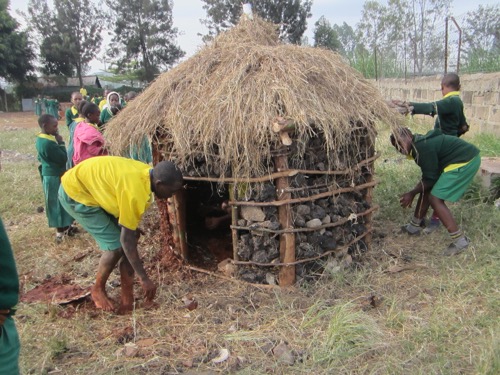

5. Kids’ Town
Adjacent to the village, we constructed a kid-sized “town,” where students can take charge of the activities they see in Mukuru through imaginative play. The market stalls were built from recycled oil drums and painted by Ruben’s resident artist, Chris.



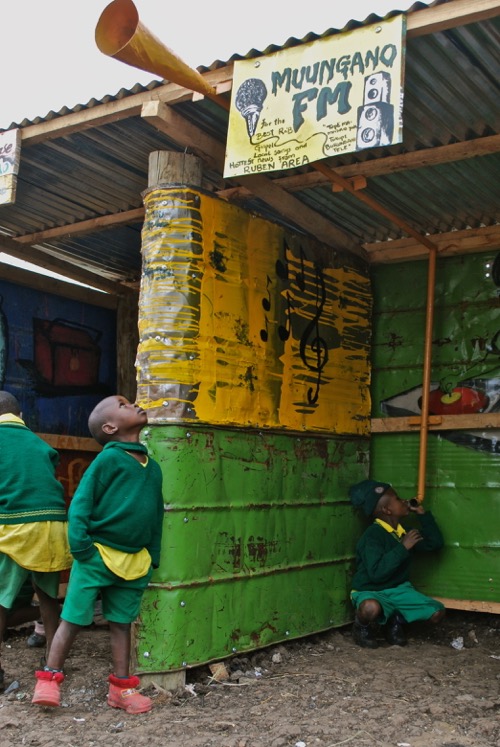
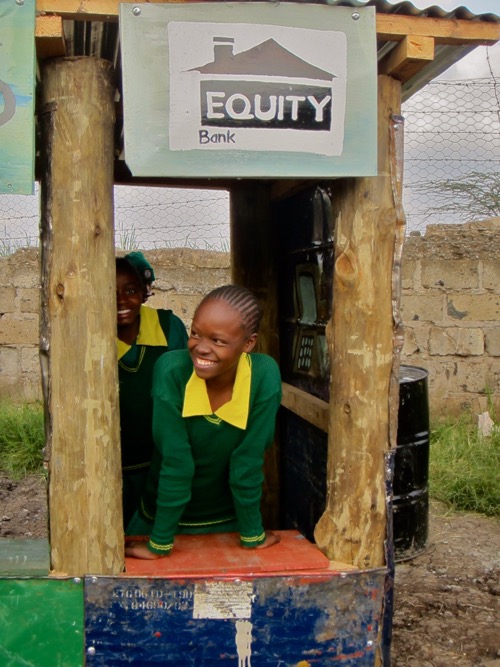


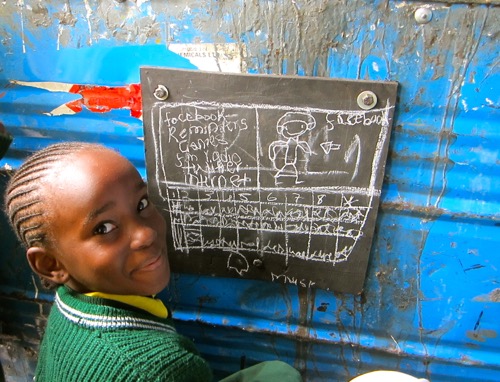
A town wouldn’t be complete without many modes of transportation.

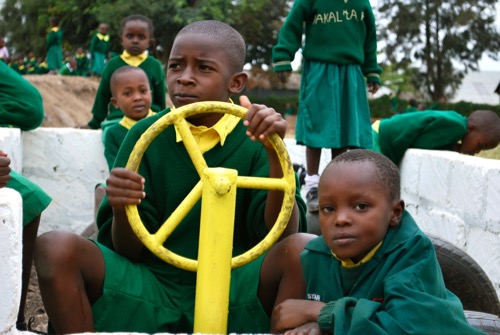

A mud molding station lies next door, for making the “inventory” of the shops.
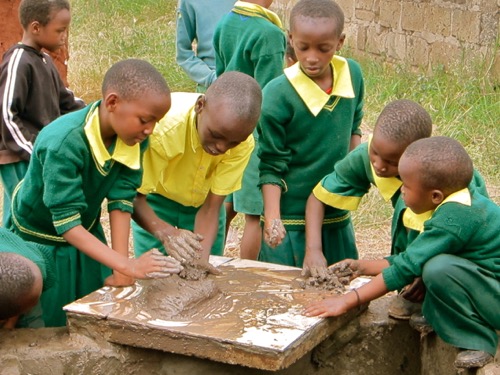

6. The Airplane
On the back of the school library, Chris painted a skyline, and the team constructed a giant seesaw airplane coming out of the sky, complete with moving wings, a steering wheel, and a propellor. Connected seesaws are a fun twist on the traditional structure as they can accommodate a multitude kids at once and produce a rolling wave affect movement.

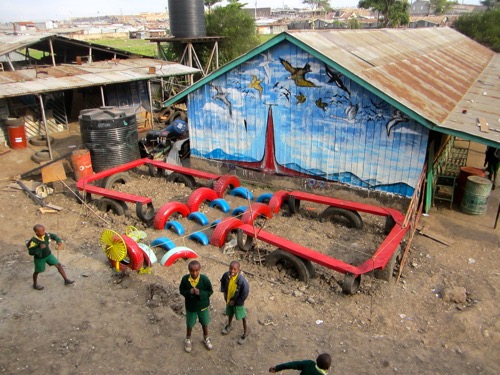
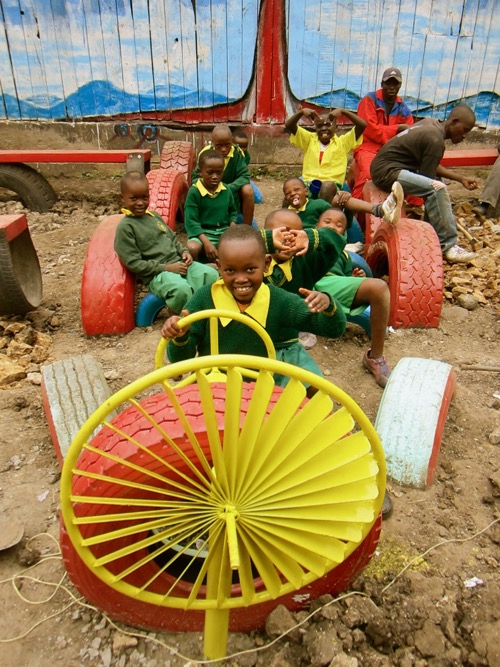
7. Sand Play
Near to the nursery classrooms, a giant sand pit was constructed, complete with a zebra print hiding nook and two friendly elephants.
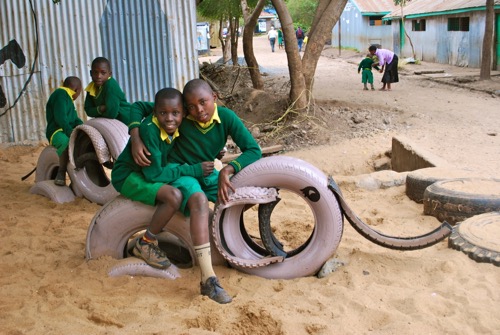

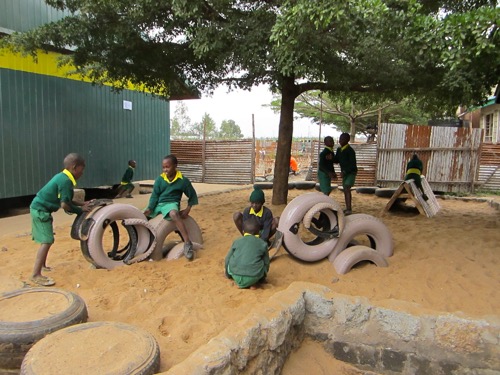
Feedback
Two months after the build, Ruben staff conducted an internal survey about the playground. From the report:
“The head teacher acknowledges that the playground has added value to the school and the children generally love the new ground. Children have become very active both in classes and outdoors and their concentration in class has improved which she sighted is due to a fresh and relaxed mind. Also the playground is a motivation for kids to come to school, in fact it becomes very hard to get them out of school in the evenings after classes because they want to remain behind and play.”
“The playground has also made it easier for outdoor classes. For instance in mathematics whereby teachers use four way seesaw to demonstrate weighing and balancing concept to pupils or social studies where pupils can use the village section of the field to learn various cultural aspects of Kenyan communities.”
“There is a mutual feeling among the parents we involved in the research that they feel more secure knowing that their children are happy, safe, and enjoying themselves.”
Many thanks to all who were involved in creating this beautiful, imaginative space for the Ruben kids to enjoy for years to come. To see more pictures of the Ruben playground project, view the facebook album. For free playground designs and resources related to this project, visit our new site, www.playgroundideas.org, and get building!






